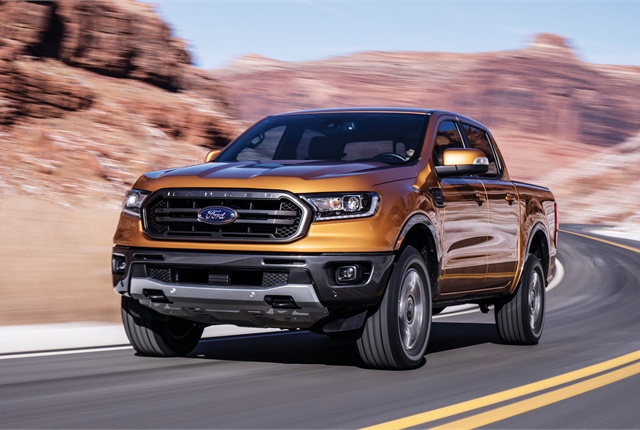
With the return of the Ford Ranger to North America, Ford aims to strengthen its lineup of Built Ford Tough trucks with a truck that provides great fuel economy without sacrificing capability.
When it releases in early 2019, roughly eight years will have passed since the Ranger nameplate left North America. One thing that Ford wants to make clear, however, is that the truck returning is not the same one that left.
“Make no mistakes about it, this is not the Ranger of old, this is an entirely different vehicle. It will be in a different segment, a midsize pickup, not a compact pickup," said Chad Callander, marketing manager for Ranger. "It’s not a mini F-150, and it’s going to attract a different customer from what we’re used to seeing, one focused on a vehicle that is going to have a lot of capability, yet is going to be maneuverable in an urban environment."
This Ranger is also not the same Ranger that’s been present in global markets since it left the North American market roughly eight years ago. This 2019 Ranger has been specifically designed and engineered for the North American market.
The 2019 Ford Ranger will be available in three trims: an XL base version, an XLT mid-level trim, and the Lariat high series trim. While each of these trims will come with varying levels of features and amenities, two things will be consistent among all trims: standard automatic emergency braking and a 2.3-liter EcoBoost engine with a segment-exclusive 10-speed automatic transmission with start stop technology, aimed at delivering class-leading fuel economy and torque, according to Callander.
The Ranger will be available in both a Crew Cab with a 5-foot short bed and a SuperCab that will have a smaller back seat but a 6-foot bed.
Fleets Ask for Safety Technology
One of the biggest requests that Ford continuously hears from its fleet customers is an improvement to the safety features offered on lower-end trims — the trims that they will likely be selecting for their fleets, according to Imran Jalal, brand and communications manager for North American Fleet. Fleets, he added, believe that if vehicles are equipped with more advanced safety features, there’s the potential to reduce their total cost of ownership, as well as their insurance premiums.
The train of thought is that with more safety technology incorporated into the trims fleets are buying, a fewer number of drivers will be involved in accidents, leading to fewer repairs and insurance claims.
To those requests, Callander said Ford has listened.
“We as a company are pushing technology further and further downstream, and fleet companies are actually one of the key groups driving this,” said Callander.
Along with the standard rear camera and automatic emergency braking that will be available on all trims levels, there will also be an optional technology package for the base model what will come standard on the XLT and Lariat trims. This package will include lane keep assist, lane departure warning, a reverse sensing system, and blind spot detection, which will not only cover the driver’s blind spots, but also provide trailer coverage.
“When it comes to safety features, yes it’s about driver safety, but it’s also about keeping vehicles productive. If a driver backs into a tree, then that asset is taken out of a fleet’s lineup. If we can avoid situations by utilizing technologies smarter, and get it down to fleets at a lower level, that’s a good thing,” said Callander.
In terms of the material composing the truck, Ford went with a mixed metal strategy. The goal with this strategy was to find the optimal mix of metals to maximize durability and lightness. Certain parts of the truck — such as the hood, fender, and tailgate — will be made of aluminum. The majority — such as body, bed, and frame-mounted bumper — will be composed of steel.
And, while exact fuel economy data will be released at a later time, Callander expects the Ranger’s 2.3-liter EcoBoost engine to deliver four-cylinder economy, with six-cylinder power. The goal with this vehicle, he said, is to deliver a vehicle that doesn’t require a choice between fuel efficiency and power.
With an expected competitive TCO, along with the new technology features that will be available — both as standard and optional upgrades — Jalal believes that fleets will be very enticed to look at the Ranger closely.
Follow @automotivefleet on Twitter
from Automotive Fleet https://ift.tt/2E5pHXT



Sourced by Quik DMV - CADMV fleet registration services. Renew your registration online in only 10 minutes. No DMV visits, no lines, no phone mazes, and no appointments needed. Visit Quik, Click, Pay & Print your registration from home or any local print shop.





0 comments:
Post a Comment